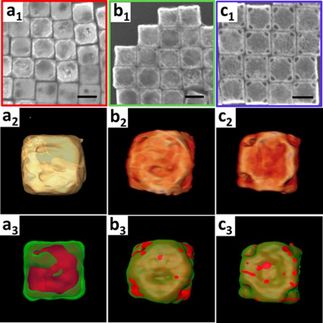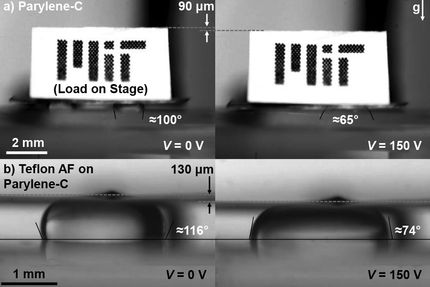Waterproofing and antifouling materials developed
'Green' project led by Swansea scientists could replace more expensive and hazardous materials used for waterproofing and antifouling/fogging.

This is a schematic of the functionalization of the nanoparticles along with photographic images of the water droplets on spray-coated microscope slides. An environmentally friendly superhydrophobic coating to superhydrophilic coating for antifogging and antifouling according to scientists at Swansea University.
Shirin Alexander Swansea University
New materials have been developed by scientists in the Energy Safety Research Institute (ESRI) at Swansea University which is nontoxic, economical and shows promise to replace more expensive and hazardous materials used for waterproofing and antifouling/fogging.
A new class of nanomaterials with tunable wettability have important applications ranging from antifouling to water proofing surfaces. Materials made by scientists at Swansea University are inexpensive, nontoxic and can be applied to a variety of surfaces via spray- or spin-coating.
The researchers led by Dr. Shirin Alexander and Professor Andrew Barron reported their find.
The spray coated nanomaterials provide both a texture to the surfaces, regardless of the substrate, and the chemical functionality that can alter the surface from superhydrophilic (water wetting) to superhydrophobic (water repelling) based on the choice of tailored functionality.
Fabrication and testing of low surface energy to high surface energy materials were carried out by Wafaa Al-Shatty a master student at the Energy Safety Research Institute at the Swansea University Bay Campus.
There, she synthesized aluminum oxide nanoparticles using hydrocarbon linear and branched carboxylic acids (with different surface energies) to demonstrate that hydrophobicity can be readily tuned based on the nature of the chemical functionality. The research demonstrates that subtle changes in the organic chain enable the control of surface wettability, roughness, surface energy and the nanoparticles ability to behave as surface active agents.
Both hydrophobicity and hydrophilicity are reinforced by roughness. Nanoparticles with the methoxy (-OCH3) functionality exhibit high surface energy and therefore superhydrophilicity properties. On the other hand branched hydrocarbons reduce the surface energy. Spiky (branched) chains are the first line of defense against water alongside surface roughness (caused by nanoparticles in both cases). This minimizes contact between the surface and water droplets, which allows them to slide off.
To be superhydrophobic, a material has to have a water contact angle larger than 150 degrees, while superhydrophilic surfaces are material whose surfaces exhibits water contact angles lower than 10 degrees. Contact angle is the angle at which the surface of the water meets the surface of the material.
The hydrocarbon-based superhydrophobic material may be a "green" replacement for costly, hazardous fluorocarbons commonly used for superhydrophobic applications. "They also are able to reduce the interfacial tension of various oils-water emulsions by behaving as surface active agents (surfactants)", Alexander said. The understanding of the relationships between the superhydrophobic and superhydrophilic nanoparticles and the resulting oil stability, emulsion properties and interfacial tension at the oil/water boundary is highly instructive yielding insights that could greatly benefit the future development of greater efficiency in the recovery of oil through enhanced oil recovery (EOR) methods.
The team is working to improve the material's durability on various substrates, as well as looking at large-scale application to surfaces.
Original publication
Other news from the department science
These products might interest you

NANOPHOX CS by Sympatec
Particle size analysis in the nano range: Analyzing high concentrations with ease
Reliable results without time-consuming sample preparation

Eclipse by Wyatt Technology
FFF-MALS system for separation and characterization of macromolecules and nanoparticles
The latest and most innovative FFF system designed for highest usability, robustness and data quality

DynaPro Plate Reader III by Wyatt Technology
Screening of biopharmaceuticals and proteins with high-throughput dynamic light scattering (DLS)
Efficiently characterize your sample quality and stability from lead discovery to quality control

Get the chemical industry in your inbox
By submitting this form you agree that LUMITOS AG will send you the newsletter(s) selected above by email. Your data will not be passed on to third parties. Your data will be stored and processed in accordance with our data protection regulations. LUMITOS may contact you by email for the purpose of advertising or market and opinion surveys. You can revoke your consent at any time without giving reasons to LUMITOS AG, Ernst-Augustin-Str. 2, 12489 Berlin, Germany or by e-mail at revoke@lumitos.com with effect for the future. In addition, each email contains a link to unsubscribe from the corresponding newsletter.




























































